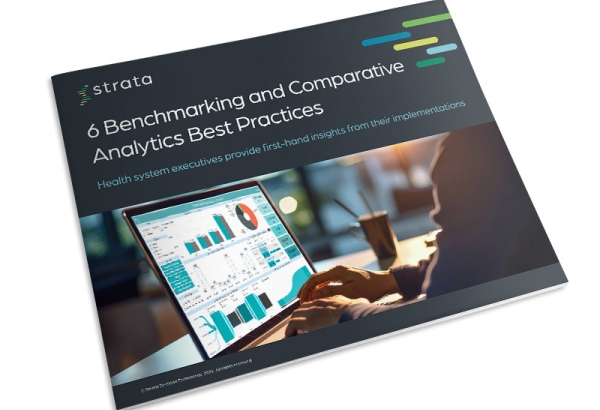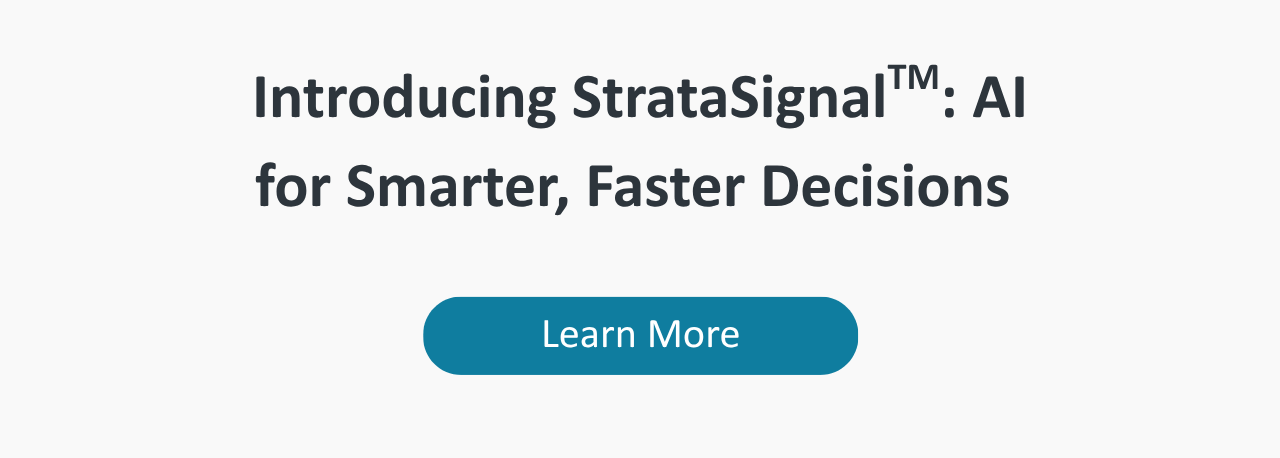Healthcare organizations have access to a wealth of data, yet 92% of healthcare professionals say organizations should do more to leverage financial and operational data to inform strategic decisions, according to a recent Strata report.i
Integrating healthcare financial analytics into decision-making processes is increasingly vital as hospitals and health systems nationwide contend with high costs, narrow margins, shifts in patient demand, and other financial and operational pressures. Doing so, however, first requires organization-wide adoption of analytics tools. When leaders can routinely access and interpret data and analytics, healthcare teams can better manage limited resources, and plan, budget, and forecast operating and capital expenses.
To learn how healthcare organizations have successfully encouraged healthcare analytics adoption — including adoption of analytics tools — we spoke with Jeff Blankenship, Chief Financial Officer at West Tennessee Healthcare; Rob Tonkinson, former Vice President of Corporate Finance at Baptist Health Care; and Cathy Tinsley, Vice President of Medical Data Analytics and Health Economics at Community Healthcare System. They shared lessons learned and tips for building the right structures and supports to overcome healthcare analytics challenges and propel teams enterprise-wide to use analytics.
1. Build trust through a cross-functional team
Using analytics is easier when various end users can access data from a trusted method and source. To address this, West Tennessee Healthcare created a cross-functional group that meets regularly to discuss issues such as how to approach data governance. The group includes members from finance, clinical, and operational teams across the seven-hospital system.
“The committee works to find common ground on definitions and sources of information,” Blankenship said. “With any data point, there are a variety of ways to get an answer. It’s important that we agree as an organization on the best way to get that answer, and that we continue to reinforce that in our training and conversations with each other.”
Community Healthcare System (now Powers Health) also developed a multidisciplinary steering committee to identify and address data governance issues. Through broad representation, the committee has helped build confidence in the data throughout the four-hospital, integrated healthcare system in Northwest Indiana.
“There’s someone from every clinical, operational, and financial team to make sure we’re all talking about the same thing, because it’s all so interrelated,” Tinsley said. “We’ve really gotten everyone to embrace that this is directionally accurate data. We’ve earned the trust of the organization. People want to use the data to decide what path to take.”
2. Prioritize actionable analytics
Baptist Healthcare’s executive steering committee also focuses on the usability of the system’s data. For example, the three-hospital system in South Florida built dashboards to help case managers understand where people are in the case management process and what needs to be done to move them forward.
“It’s really moving from analytics that just provide information about what’s going on in the organization to analytics that are actionable and more real-time,” Tonkinson said. “They’re leading to action rather than just giving people a sense of how the organization is performing.”
Community Healthcare System takes a consultative approach. Rather than just churning out data reports, they seek to understand the business problems the organization is seeking to address, how the data will be used, and how to get the best data, Tinsley said. They’ve developed 115 dashboards that are used routinely for healthcare data visualization in an easy-to-understand and actionable format.
“We’ve become a data-driven organization, mostly because there’s no room for error in healthcare,” Tinsley said. “We cannot go down the wrong path. We cannot make mistakes. We have to make good, quick decisions, instead of slow, perfect ones. Analytics has become ingrained in our strategic planning and how we move forward.”
3. Establish a single source of truth
“The single thing that’s helped adoption [most] is developing a single platform with a consistent interface between all of our dashboards and analytics,” Tonkinson said. “That way, people don’t have to go to multiple places. We can push information to them, and they can click on it and go where they need to go.”
The goal is to make the entire analytics structure more efficient, he added. Prior to the current system, Baptist Health collected data and analytics in a variety of ways across disparate sources. Now, regardless of the department that produces the data, a single platform manages and delivers the analytics across the organization, making it easier for leaders to access.
4. Prioritize the end user
To ensure adoption, organizations should carefully consider the end user’s experience. They should consider whether the analytics tool is user friendly and if the analytics are easy to understand.
“Change management has always been important, but it really is even more so today,” Blankenship said. “We have to consider what we would like to do, balanced against what we can afford to do and what resources we have. It’s really important to look at things through the lens of the person who’s supposed to use the data. We want to make sure we’re putting it right in front of them and making it easier for them to get the data and act upon it.”
Healthcare organizations that excel with analytics adoption also make multiple training avenues available to users. Blankenship emphasized that different users may respond best to different training methods — such as on-demand options like video, or in-person working sessions that allow users to manipulate the data hands-on.
5. Establish rigor around data quality
Lastly, organizations must continuously work to optimize data quality. Community Healthcare System leveraged its process improvement office to address enterprise-wide issues or inconsistencies that arise from the data. Before this focus on data quality, no one was equipped to address issues even when the organization could identify them.
“Now, we have a group of black-belt, Six-Sigma trained individuals who then take these data components and turn them into process improvement projects,” Tinsley said.
Baptist created an Analytics Center of Excellence to administer data governance, which Tonkinson emphasized is an ongoing process. Data should evolve as challenges evolve and as new opportunities arise.
“It's always a work in progress, because the analytics you need for the organization change as your competition changes, as what you're doing changes, and as regulations change,” he said. “You're never going to arrive at a perfect state, but we are moving more and more toward making sure that there are analytics that people understand and that they are using regularly to really drive change.”
Healthcare financial analytics have the potential to transform a healthcare organization’s planning and budgeting, which can influence overall organizational performance as well as patient care — but only if leaders truly trust the data and put it to use. With an end-user focused platform, trusted source of truth, and the right supports, your organization can increase adoption and get the most out of your analytics tools.
More healthcare analytics resources

Healthcare Performance Trends

6 Benchmarking and Comparative Analytics Best Practices



